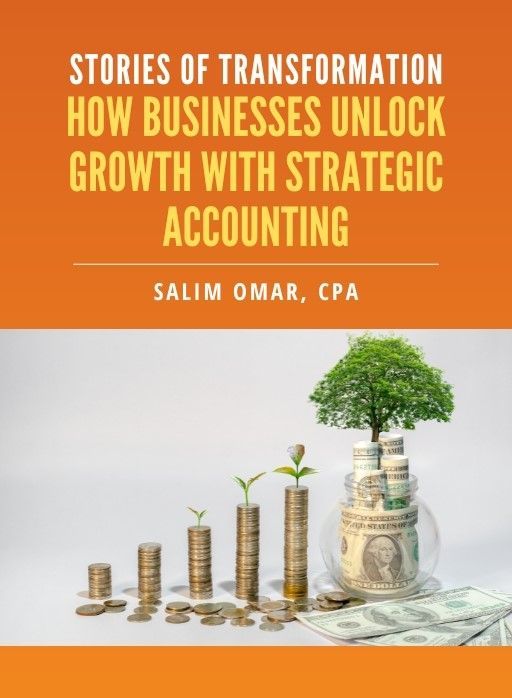Mid-Year Goal Reset: A Step-by-Step Business Planning Guide

There’s something about the halfway mark of the year that brings both urgency and opportunity. Six months in, some business goals might be right on track, others… not so much. That’s exactly why a mid-year goal reset is one of the smartest moves a business can make. It’s the sweet spot between reflection and reinvention — and when done right, it sets up the second half of the year for real growth.
Straight Talk CPAs works with entrepreneurs, CEOs, and growing teams who often realize that July isn’t just hot weather and Q3 — it’s a chance to recalibrate. If the first half felt chaotic or unclear, this is the moment to create structure and momentum. This guide walks through a no-fluff, step-by-step process to review, revise, and reset your business goals using the tried-and-true SMART framework.
Let’s break this down.
Why a Mid-Year Reset Matters More Than You Think
Mid-year is powerful because you’ve got just enough data and experience from Q1 and Q2 to know what’s working and what’s falling flat. It’s a pulse check that helps shift from reactive mode to proactive decision-making.
Whether it's lagging revenue targets, overambitious hiring plans, or customer retention slipping through the cracks — this reset is where clarity meets strategy.
Top reasons to hit reset:
- New market conditions or unexpected economic shifts
- Burnout in your team or leadership
- Unclear KPIs or conflicting priorities
- Projects that no longer align with your big-picture goals
A reset isn’t about starting over. It’s about getting sharper and more aligned.
Step 1 – Conduct a Brutally Honest Mid-Year Review
Before diving into new goals, look back. Not just at what happened, but why it happened. Pull your financial reports, marketing data, project timelines — all the messy, raw info that tells the real story.
Here’s what to focus on:
- Revenue and profit margins: Are you pacing toward annual targets?
- Customer growth or churn: Are your efforts bringing in (and keeping) the right people?
- Employee performance and morale: Are your team’s goals aligned with business priorities?
- Project execution: What’s on time, what’s behind, and what should be cut?
Be honest. This is where a
CPA,
fractional CFO, or
strategic advisor comes in handy. Straight Talk CPAs often helps clients spot blind spots during these mid-year check-ins — especially when financial data isn’t telling the full story until it’s framed with context.
Step 2 – Evaluate the Original Goals (And Be Willing to Let Go)
Now that the review is on the table, grab your list of goals from the start of the year. Ask yourself (and your team):
- Has this goal become irrelevant?
- Was it realistic to begin with?
- Did market conditions shift the importance of this initiative?
- Are we chasing it because we
should or because we
need to?
Give yourself permission to
retire goals that no longer serve the business. A common mistake businesses make is pushing forward just to say they finished something — even when it no longer moves the needle.
Step 3 – Use the SMART Framework to Rebuild (or Revise) Goals
Here’s where things get tactical.
The SMART framework turns vague ambitions into clear, actionable strategies. It stands for:
- Specific – What exactly is the goal?
- Measurable – How will success be tracked?
- Achievable – Is this doable with current resources?
- Relevant – Does it align with the business’s strategic priorities?
- Time-bound – What’s the deadline?
Let’s say the original goal was:
“Grow the email list.”
Refined using SMART, it becomes:
“Increase the email list by 1,500 subscribers by November 30 through two lead magnet campaigns and a referral program.”
That’s something your team can actually work toward.
Other examples of SMART goals:
- Launch a new service by September 1 and hit $15K in revenue from it by December.
- Reduce client onboarding time from 3 weeks to 10 days by automating document collection by October.
- Hire and train two new account managers by Q4 to reduce workload on senior staff.
This isn’t just about wording. It’s about commitment and clarity.
Step 4 – Align the Whole Team (Not Just Leadership)
A major misstep in goal resets? Keeping them siloed in leadership meetings.
Everyone — from marketing to operations to the support team — should understand the “why” and “how” of the reset. This ensures the team pulls in the same direction and stays motivated. Share revised goals in a company-wide meeting or internal dashboard, and make it easy for departments to track their own progress toward those outcomes.
If certain goals need cross-functional collaboration, now’s the time to set expectations and timelines.
Step 5 – Tie Your Goals to Financial Metrics
It’s easy to fall in love with vanity metrics. More followers, more clicks, more likes… but what do those translate to?
Every goal should have a financial connection. If it doesn’t boost revenue, reduce costs, improve margins, or increase cash flow, it needs a second look.
Straight Talk CPAs often helps clients map operational goals to financial forecasts. For example:
- A goal to improve customer retention ties directly to increasing lifetime value.
- A goal to optimize ad spend should reflect better ROAS (return on ad spend).
- A goal to streamline accounts payable can improve vendor relationships and reduce late fees.
Numbers tell the story. Use them to anchor your plan.
Step 6 – Set Up a Tracking System
Goals without tracking = wishful thinking.
Use whatever system works best for your team — a shared spreadsheet, a project management tool like Asana or Monday, or quarterly check-ins with department leads. The key is consistency.
Establish:
- Who owns each goal
- How often updates are reviewed
- What benchmarks or milestones are expected
And don’t forget to celebrate wins along the way. Recognizing progress (even small ones) keeps morale high.
Final Thoughts
The mid-year point is not a deadline. It’s a checkpoint. A chance to get real about what matters, clean up the clutter, and go all-in on what will actually drive results.
Use this framework. Make it your own. And if the financial side feels overwhelming, Straight Talk CPAs is here to help align your goals with the metrics that matter. Because good intentions are great, but backed-by-data strategy? That’s where real growth happens.
Free eBook:
Stories of Transformation


Salim is a straight-talking CPA with 30+ years of entrepreneurial and accounting experience. His professional background includes experience as a former Chief Financial Officer and, for the last twenty-five years, as a serial 7-Figure entrepreneur.




